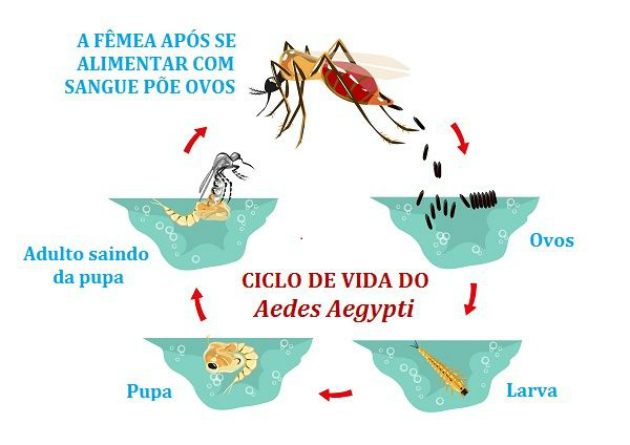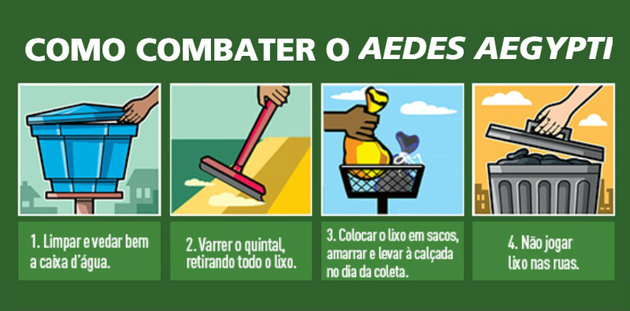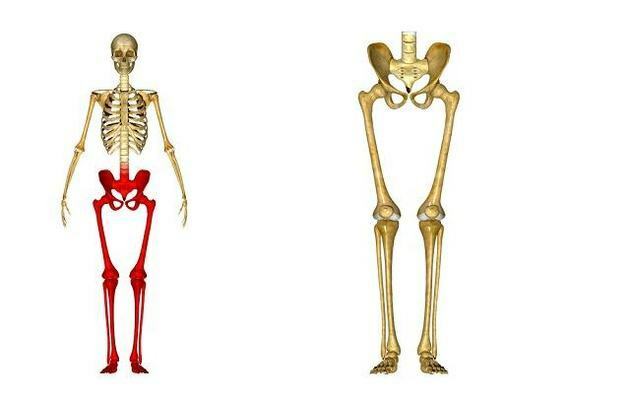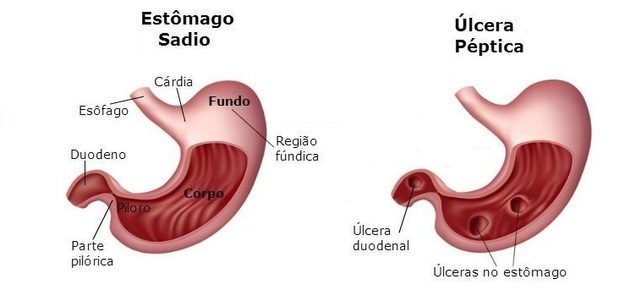Aedes aegyptiis the scientific name of the mosquito that transmits dengue, zika, chikungunya and yellow fever. These diseases are called arboviruses.
Its name means "hateful of Egypt", derived from Latin and Greek. It originates from Africa and is currently spread all over the world, being more numerous in tropical countries, due to the favorable climate for its development.

The dengue mosquito, like other insects, goes through a metamorphosis in her life cycle. The female needs to feed on blood (from an animal or human) to complete her development and then look for a place to lay her eggs.
The female can lay about a hundred eggs at a time, and she usually chooses different locations to ensure they hatch. She doesn't put the eggs in the water but on the edge so that there is enough heat and humidity for the eggs to hatch.
If for some reason there is not enough water for the eggs to hatch, they can lie dormant for up to a year and hatch as soon as there is enough water.
Once the eggs hatch, the larvae go into the water, representing the aquatic phase in the mosquito's life cycle. They go on to the pupa stage still in the water and when they complete development, a ready adult insect emerges.
which mosquito is the Aedes aegypti?

O Aedes aegypti it is a bug, of the family Cullicidae, which has a characteristic that differentiates it from others: the presence of white stripes on the trunk, head and legs.
Females are hematophagous, meaning they feed on blood, while males feed on fruit.
It is believed that the dengue mosquito, as it is also called, arrived in Brazil along with the ships that brought slaves at the time of colonization.
Today, it is widely distributed and well adapted to the country, which makes its control difficult and requires more effective measures from the government and help from the population.
What diseases does the mosquito transmit?
O Aedes aegypti it transmits some diseases. However, it is important to emphasize that only infected mosquitoes transmit the disease.
The main diseases transmitted by Aedes aegypti are: yellow fever, dengue, zika and chikungunya.
Yellow fever
Yellow fever is an infectious disease caused by a virus and transmitted through mosquito bites.
Symptoms are: high fever, malaise, muscle pain, headache and chills. There is no specific treatment, being recommended only rest and hydration.
Dengue
THE dengue causes sudden high fever, headache, pain in the body and joints, nausea and vomiting, there may also be red patches on the body and itching.
The disease has a more severe form, which develops rapidly, which produces hemorrhages and can lead to death. As soon as symptoms appear, the patient should seek medical attention to confirm the suspicion and provide adequate care.
Zika
THE zika it is a disease that can cause a low-grade fever, headache, joint pain, itchy red spots on the body, redness of the eyes and tiredness.
Chikungunya
The first report of chikungunya in Brazil was made in 2014 in the north of the country. It is a disease that occurs together with dengue and causes sudden high fever, constant headache, red spots on the body with intense itching and severe pain in the joints with swelling. The disease can get worse in older people, or those with chronic and autoimmune diseases.
How to prevent Aedes aegypti?

Knowing the mosquito's ecology is important to prevent it. It is extremely important to eliminate outbreaks to control their reproduction and proliferation, which is the best way to avoid the diseases it causes.
Find out below some information about how he lives and behaves:
- It is an urban mosquito, which prefers to live indoors, even on higher floors it can reach. It can be found in both urban and rural areas.
- Unlike other mosquitoes that rest after biting, the Aedes it can bite many people in a row, which is why diseases spread so quickly.
- You need clean, still water to lay your eggs, but you can also lay in places with more organic matter, meaning that it looks dirty.
- Eggs can be deposited in any place that accumulates water such as: tires, buckets, plants or even a soda cap.
- It has daytime habits, but because it is an opportunist, if it doesn't get food during the day, it can bite at night, or any other time of day.
- Who bites people is the female, as she needs the blood to complete her development cycle and for her eggs.
- When biting an infected person, if the female that does not contain the virus she becomes infected and passes it on to other people.
- It usually flies lower, at the height of our legs, but it can sting any part of the body.


